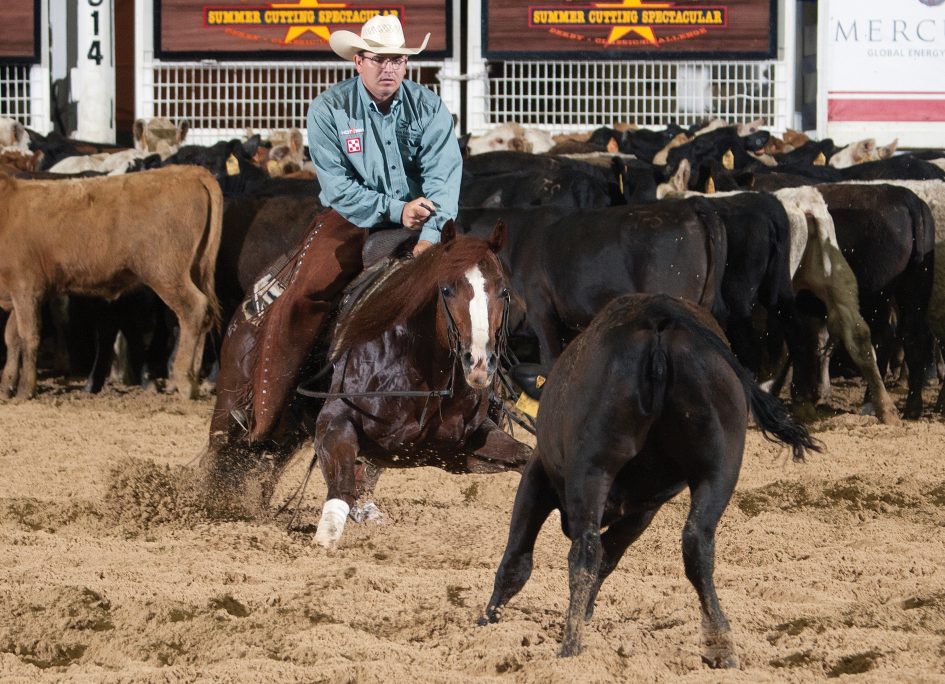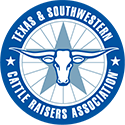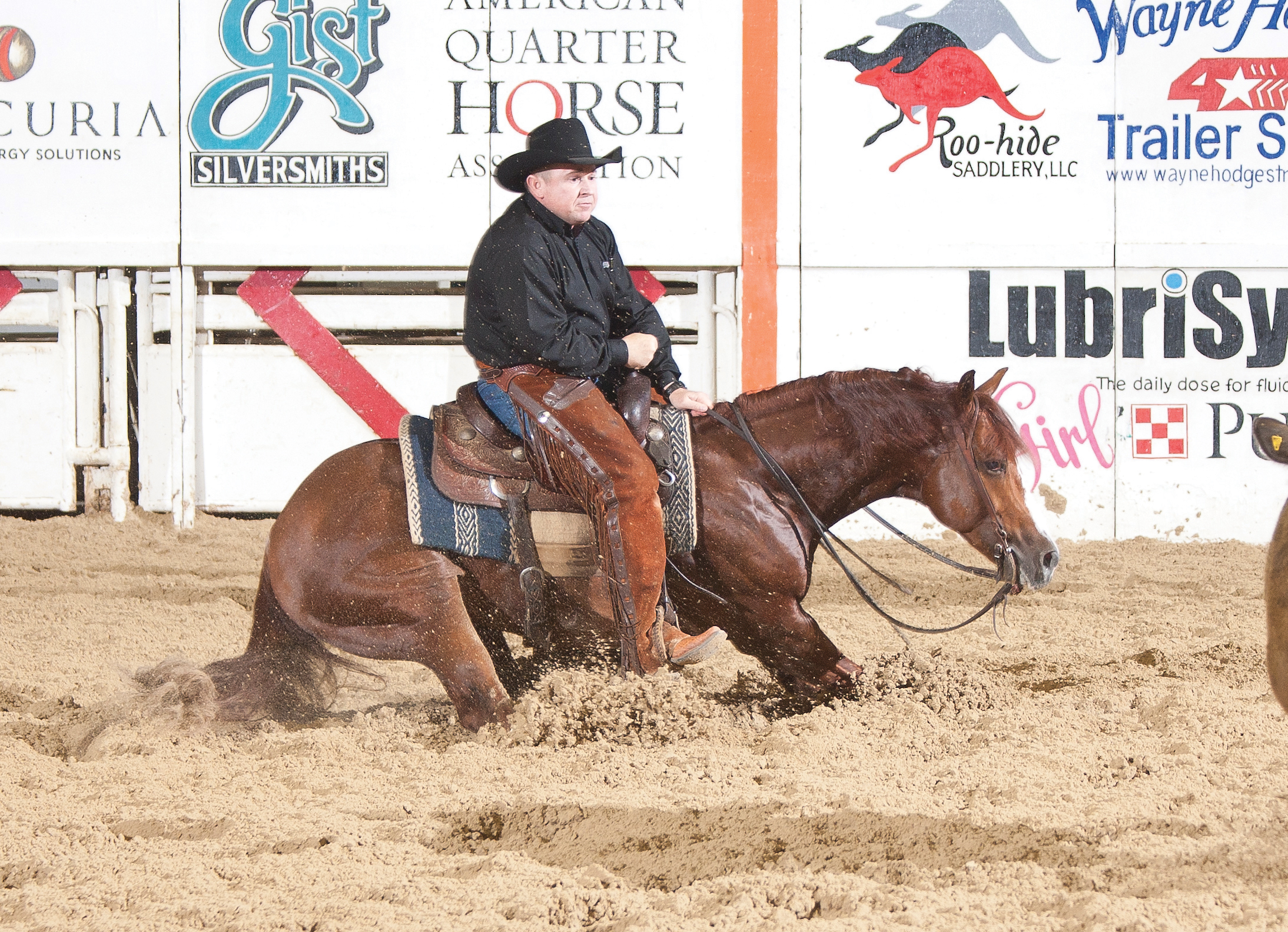Consider Leasing Calves for Cutting Horse Shows, Training

By Gala Nettles
Need a little extra pocket change? Perhaps a place to park some cattle for several weeks?
Consider leasing them. Cattle are king to horse training operations, major aged events and weekend shows, and your need could fill their need.
Affiliates with the National Cutting Horse Association (NCHA) held 430 weekend shows in Texas last year, some lasting 2 days, some lasting a week. The longer the show, the more cattle needed.
Ditto the length of time and number of cattle for the affiliates with the American Cutting Horse Association (ACHA) who held more than 100 weekend shows. That is just 2 associations and only their weekend shows.
Besides weekend shows there are aged events, horse clubs, junior and senior high school rodeos, and the hundreds of trainers who need cattle for their business and need to change them regularly. Neither is leasing cattle just a Texas idea. Horsemen from coast to coast lease cattle. In fact, if the lessee isn’t too far across a state line and the finances work, cattlemen have been known to truck those cows right across that Texas border.
The biggest question for a cowman isn’t finding someone to lease his cattle, but rather learning the logistical ropes of doing so and deciding whether it fits him.
Not your standard lease
Leasing to others to work your cattle does not fit the standard cattle leases used by cattlemen who are trying to expand their herd through leasing rather than purchasing. Neither is it like leases used for transferring cattle over time from one owner to another rather than one direct sale. Typically, these leases often last 2 to 10 years and include details about sharing the revenue as well as sharing the expenses.
Not so leasing cattle to a trainer or to horse shows. First, the lease time is shorter. It could be a weekend, it could be 2 weeks, maybe even 2 months.
Secondly, there may be a discussion about sharing the revenue and the expenses.
In Oklahoma
“There are no shortcuts when it comes to leasing quality cattle,” stresses Della Hillerman, Tecumseh, Okla.
For 36 years, Hillerman has secretaried shows of all sizes and in quite a few states. “No matter if it’s a 2-day event or a 2-week one, fresh cattle are a show’s most valued commodity and some shows use several thousand head.”
Fresh cattle help a horse display his best abilities, while sour ones may refuse to work the horse or worse, attempt to run over him. In fact, cattle can build a show’s reputation or they can hurt it. Hillerman, who is known for producing good shows, starts by working one-on-one with her cattle suppliers.
“Cattle are the livelihood of the men who are entrusting me with their most valuable asset,” she explained. “I, on the other side, am entrusting them to send me the best quality cattle I can provide to my contestants.
“I know my cattlemen and we verbally agree on the details,” she continues. “I accept responsibility for the cattle from the time they are unloaded until they are back on the truck. Should one get hurt while in our care, we pay market value. If one comes off the truck crippled, then we load it back on the truck rather than accept it.”
Hillerman has built a great pool of cattle suppliers, since at times she may need as many as 4,500 head for an aged event. While it is preferable to secure all the cattle from a single supplier, with large shows it is not always possible.
The logistics for leasing large groups require a close working relationship between supplier and show management. Besides needing a large number of cattle, show producers also need the same kind and same size of cattle for each class, leveling the playing field as much as possible for contestants working in the same class.
For Hillerman, that’s where Phil Land, the cattle master, comes in. “I am so fortunate because Phil coordinates with the cattle suppliers. He manages everything behind the gates and always has a No. 1 crew working with him. He’s the best in the business.”
In Georgia
The old-fashioned handshake has been the contract between the Augusta Futurity and Jim Whiten since the early 1990s.
The late Roger Odum, an advocate for cutting and past president of NCHA’s Area 18, was quite a hustler for the sport. He learned that Whiten bought and sold cattle, so he picked up the phone and started a strong friendship that lasted until his death in 1994.
“Back then, about ’91 or ’92, we bought about 450-pound calves, turned them out until they weighed about 750 pounds and then sold them,” recalls Whiten. “We shipped between 29 to 35 loads a week so we went through a lot of cattle, but I didn’t have the slightest idea what Roger was talking about when he called.”
Even so, Whiten began delivering “some 300 head or so” to Odum’s weekend cuttings on nothing but a handshake. Odum also worked with the Augusta Futurity, a show for young horses held in Augusta, Ga. With his prodding, Whiten furnished cattle for the aged event as well.
“I started off furnishing cattle for about 2 days the first year,” says Whiten, “and then it grew to 3 days, then to 7 days. When the cutting got real big we did about 3,500 head for a show.”
These days Whiten, who has trucked cattle in and out of arenas for Augusta shows for almost 30 years now, works with show coordinator Sherry Fulmer. He knows the people he works with, so the simple verbal agreement works. If a cow is injured or sick on Whiten’s watch, he takes responsibility, but if it is injured or sick on the show’s watch, they take responsibility.
“If you’ve got good people to work with,” he offers, “it’s a good deal.”
In Texas
Contracts, though, can be added security, just like that second snap on a gate. Kenny Emigh, Cleburne, is on both sides of the contract fence. As the lessor, he uses a contract when leasing his cattle. He also swaps hats and signs a contract when he delivers cattle for other businesses.
“I have leased approximately 75,000 cattle in the past 5 years, primarily to cutter and cow horse clients,” says Emigh, “and I use almost the same agreement today that I started using 5 years ago. It’s been tweaked a little, but it works with my training clients and half a dozen others who pasture cattle on a 60-day keep. It mostly describes gain pays, terms, and loss language.”
Then there is his role as the lessee when trucking cattle for other businesses.
“I sign an agreement on gain for the cattle I deliver to an order buyer in Florida for Midwest Feeders. If you work with only a few and trust them, maybe a contract wouldn’t be needed, but it’s just a bit of added security.”
Trainer Punk Carter, Celina, signed agreements with his supplier when he steadily trained horses. Instead of an agreed price for leasing for a specific length as with show producers, weight gain was the focus.
“They were pretty typical of most of the training leases about weight gain and regular health treatments. If they gained weight we made a percentage of their sale; if not, the cattle cost us money. They were weighed coming in and then weighed going out.
“We were responsible for most of the death loss,” he continued, “but there was some leeway if we were leasing for weight gain. If we killed one, we paid for it, but if it died naturally, they paid for it.”
Roping cattle are the commodity that Sissy Miller, Tolar, rents. She, too, signs a similar lease, but one geared toward ropers.
“We sign a lease agreement for 6 months at a time. We can be charged a fee for things such as broken horns, lack of weight gain and, of course, death or a broken leg, at the current market value on the steer.”
Knowing the person you’re leasing to and leasing from can definitely impact the decision as to whether to shake hands or sign a contract. Linda Lane, who secretaries for the ACHA in Brenham, has a good working relationship with her cowman.
“I lease from 300 to 600 head per weekend for Brenham shows, depending on the number of entries” explained Lane. “If the class size grows the day of the show, he will even bring more cattle that day and it’s all done with a verbal contract.”
It is the same for trainer Ronnie Nettles, Madisonville, who has worked cattle furnished by ranchers on a handshake for most of his training career. Cattleman Randy Bullard, recently deceased, furnished the majority of the animals.
“It was an easy way of working and it helped us both,” began Nettles. “I fed them, paid any vet bills they might incur, took care of them and settled them down, so when Randy got them back they were easier to work with.
“When that group got sour, I’d call him and in a day or 2 he’d be here with a fresh trailer load.”
With a laugh, Nettles adds, “We’ve even been surprised by a heifer calving while she was here. We just put her and her baby in the horse barn and watched over them every day. Randy picked her up when he brought the next set of fresh cattle.”
Bottom line
The logistics of renting cattle are simple:
- When leasing to shows you’ll need to have a good-size herd. This type of lease is usually done on a flat fee per cow.
- When working with trainers, they need a small number of cattle at a time but need to change them often.
- Delivery of fresh cattle when the horseman needs them is important, since his business relies on them and, therefore, on you.
- Contracts? That’s up to you.
Larger cattle companies who ship to numerous trainers and shows use contracts. Several, although not all, have attorneys draw them up. Some large cattle companies use a standard contract.
Whiten said about leasing cattle, “If you’ve got good people to work with, it’s a good deal.”
“Consider Leasing Calves” is excerpted from the November 2017 issue of The Cattleman magazine.

